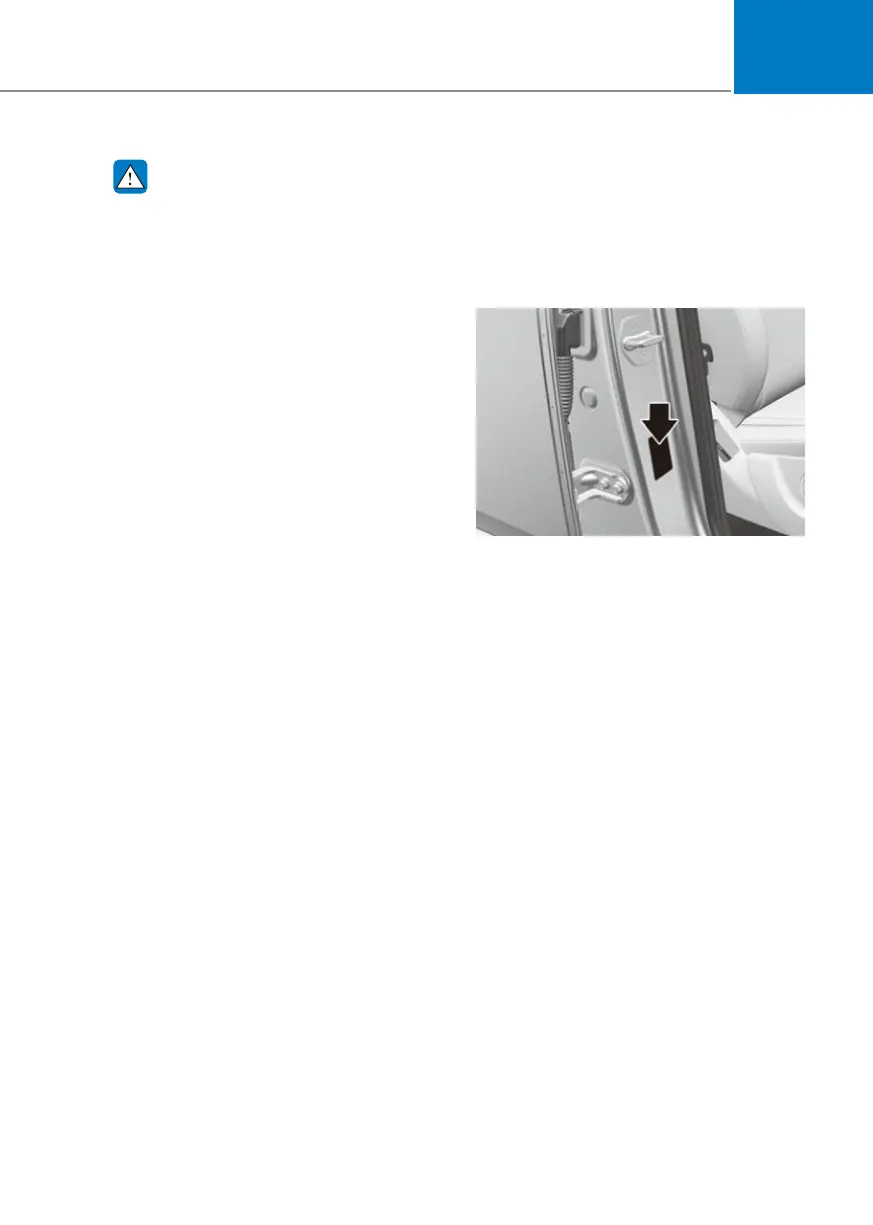09
9-33
WARNING
Tyre failure may cause loss of vehicle
control resulting in an accident. To
reduce risk of SERIOUS INJURY or
DEATH, take the following precautions:
• Inspect your tyres monthly for
proper inflation as well as wear and
damage.
• The recommended cold tyre pressure
for your vehicle can be found in this
manual and on the tyre label located
on the driver’s side centre pillar.
Always use a tyre pressure gauge to
measure tyre pressure. Tyres with
too much or too little pressure wear
unevenly causing poor handling.
• Check the pressure of the spare
every time you check the pressure of
the other tyres on your vehicle.
• Replace tyres that are worn, show
uneven wear, or are damaged. Worn
tyres can cause loss of braking
effectiveness, steering control, or
traction.
• ALWAYS replace tyres with the
same size, type, construction and
tread pattern as each tyre that was
originally supplied with this vehicle.
Using tyres and wheels other than
the recommended sizes could cause
unusual handling characteristics,
poor vehicle control, or negatively
affect your vehicle’s Anti-Lock Brake
System (ABS) resulting in a serious
accident.
Tyre care
For proper maintenance, safety, and
maximum fuel economy, you must
always maintain recommended tyre
inflation pressures and stay within the
load limits and weight distribution
recommended for your vehicle.
OJX1010024ROJX1010024R
All specifications (sizes and pressures)
can be found on a label attached to the
driver’s side centre pillar.
Recommended cold tyre
inflation pressures
All tyre pressures (including the spare)
should be checked when the tyres are
cold. “Cold tyres” means the vehicle has
not been driven for at least three hours
or driven less than one mile.
Warm tyres normally exceed
recommended cold tyre pressures by 28
to 41 kPa (4 to 6 psi). Do not release air
from warm tyres to adjust the pressure
or the tyres will be under-inflated. For
recommended inflation pressure, refer to
“Tyres and Wheels” section in chapter 2.
TYRES AND WHEELS

